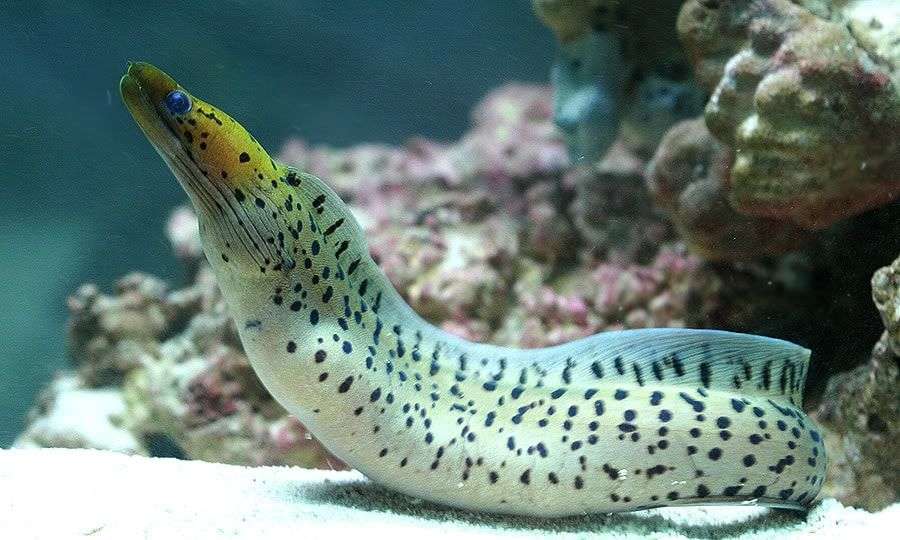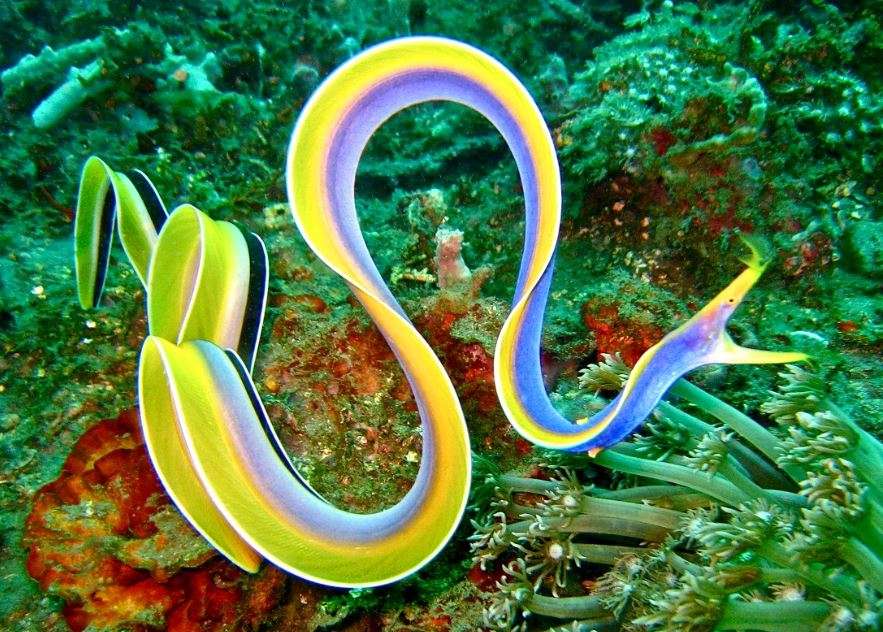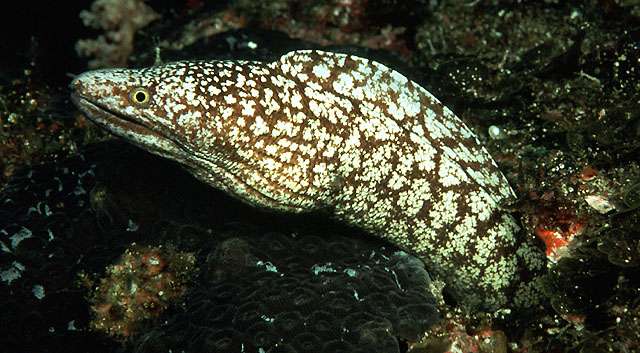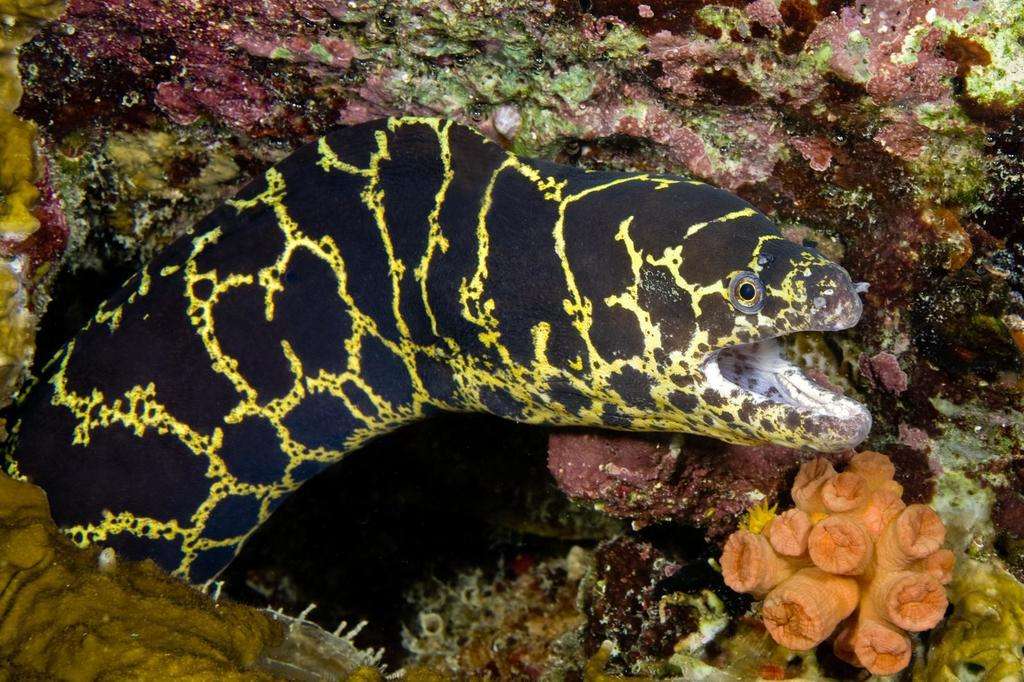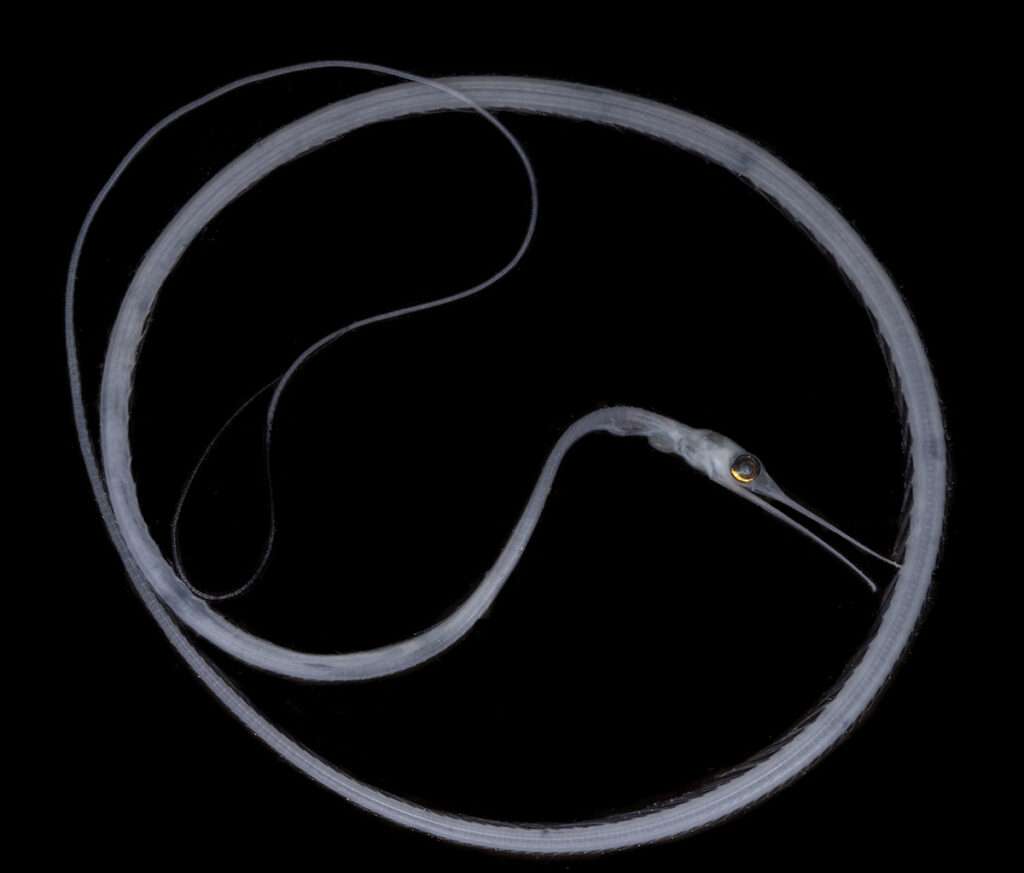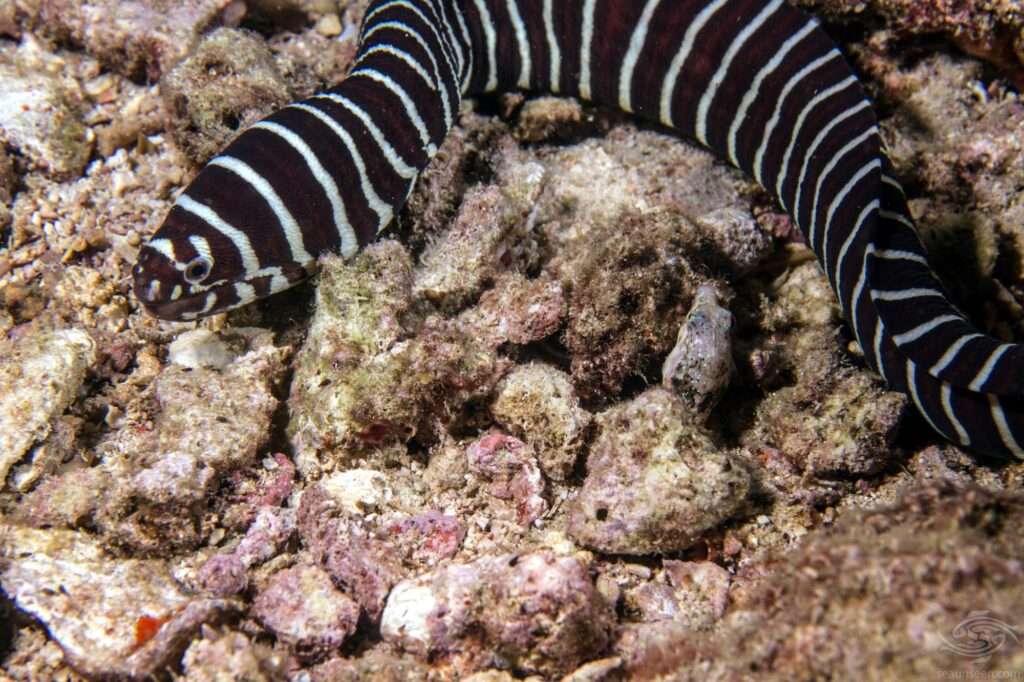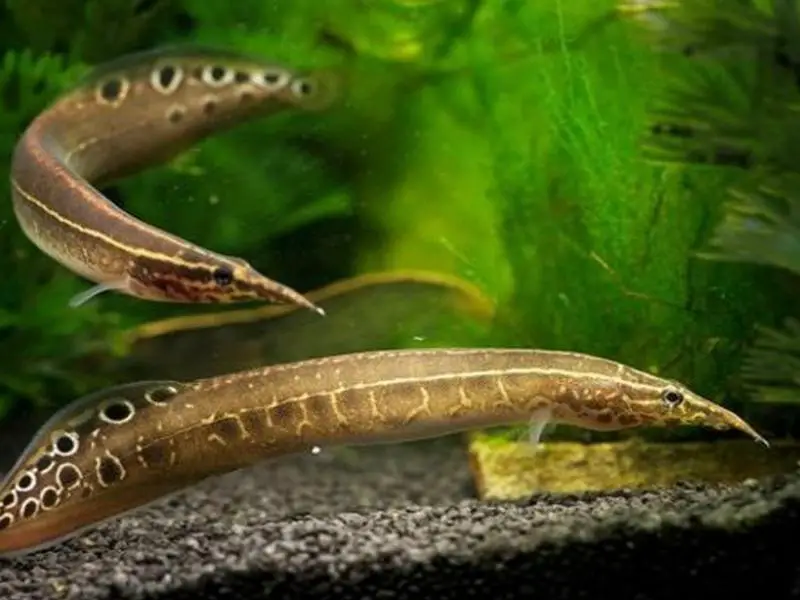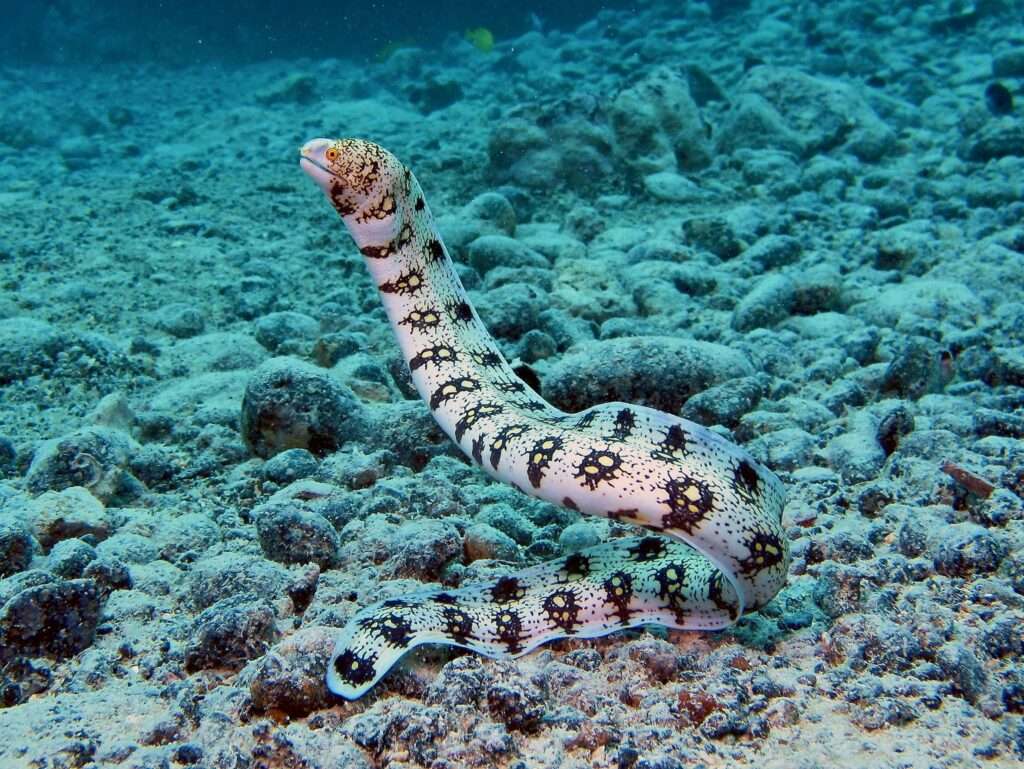Yellow head Moray Eel
In general, the Fimbriated Moray Eel is light tan to grayish brown. In adults, the body is covered in irregularly spaced, variously sized spots and bars that range in color from brown to black. On the head area, there are sporadic spots of various sizes on the facial area. Although the heads of adults may […]
Yellow head Moray Eel Read More »


